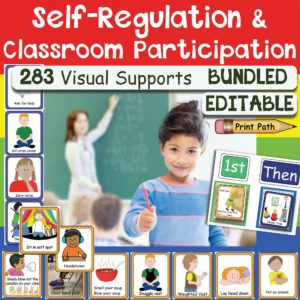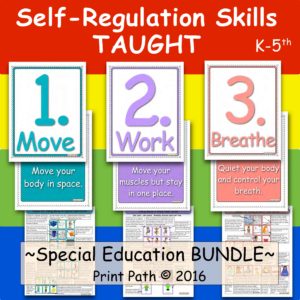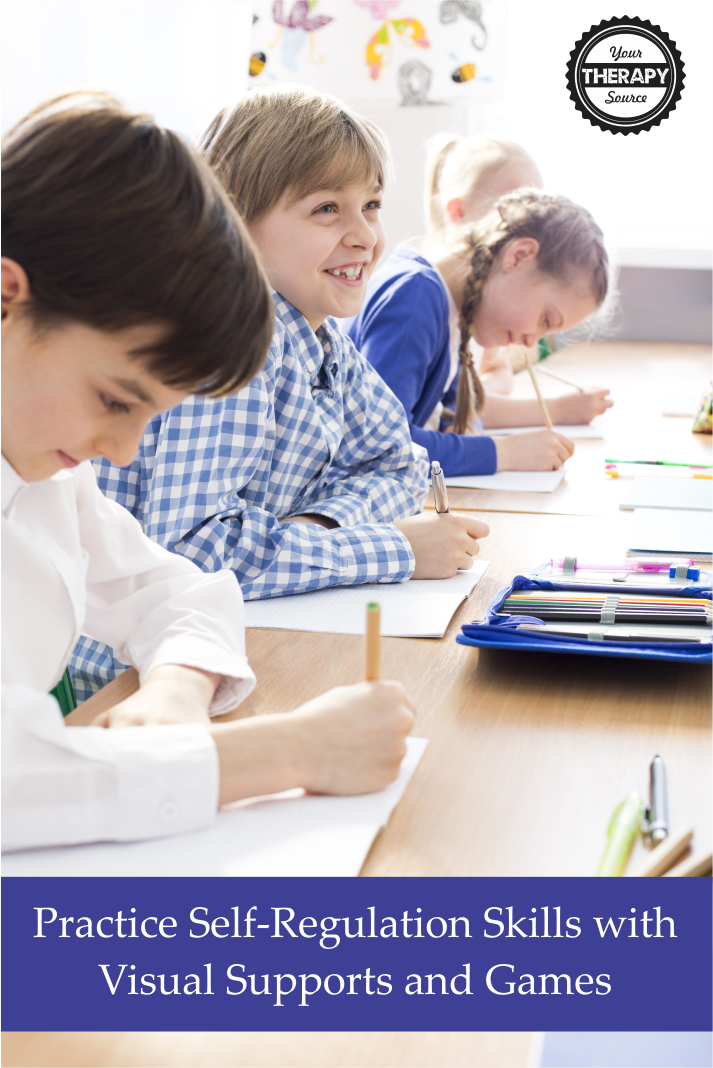Practice Self-Regulation Skills with Visual Supports and Games

As children develop motor skills and process sensory information they start to understand how their body can move slow, fast and all the speeds in between. Over time, children begin to learn to self-regulate and determine their “just right” body. Therapists, teachers, and parents can help children practice self-regulation skills with visual supports and games.
Why is it important for the body to be in a “just right” state?
Children tend to be open to new information best when their bodies are ready to learn. If a child is running all over the house or the classroom, it can be hard to learn new information. Their senses are on overdrive. On the flip side if a child is feeling very sluggy and tired, it also can be hard to learn new skills. When the body is in a “just right” state we are ready to take in new information and learn new skills.
Children need ample time to experience slow and fast movements and motion in order to be able to stop, self-regulate and learn.
Ideas to Learn the Differences Between Slow, Fast and Just Right
Some children need extra time to learn the differences between slow, fast and just right body state. Perhaps it because of a lack of sensory motor expereinces (i.e. excessive screen time) or because a child has difficulty processing sensory input. Whatever the reason, take time to teach children how their bodies feel when they move fast, slow, and just right.
Game Ideas to Practice Self-Regulation Skills
Here are some suggestions to teach and practice self-regulation skills with children. To start, teach and review with children how to stop. Play games that require children to stop and start. Games like Red Light, Green Light where kids move on the green light and stop on the red light. Try playing Freeze Dance and turn on music. When
Play a charades type game in slow motion. Pretend to act out activities in s-l-
Try moving at different speeds or with different motions. Walk slow, walk fast and walk at a normal pace. Run slow, run fast and run at a normal pace. Clap your hands slow, fast and at a normal tempo. Stand up at a desk,
Visual Supports to Practice Self-Regulation Skills
Work on creating meters that range from too slow, just right and too fast. Provide children with visual examples of people or objects moving too slow, just right/focused/attentive and too fast.
Check out Too Slow, Just Right or Too Fast – Visual Supports for Self-Regulation. The digital document includes 11 visual supports to help children practice self-regulation skills.
Need more visual supports for self-regulation skills?
Visual Supports: Schedules, Self-Regulation, & Classroom Inclusion includes 283 visuals to help reinforce and practice self-regulation skills. The pictures are

Need more ideas to practice self-regulation skills?
If you need more ideas to practice self-regulation skills

Self- Regulation Skills Taught: This curriculum provides an effective, time-efficient structured system to provide classroom breaks, improve self-awareness and self advocacy and teach specific self-regulation skills so that kids have tools to use in their classrooms. This system will get kids moving, give them the benefits of a brain power boost [from getting their heart rate up], give them heavy work and isometrics to help them calm down, and help them learn techniques to quiet and control their bodies in order to return to their academic work. FIND OUT MORE.



